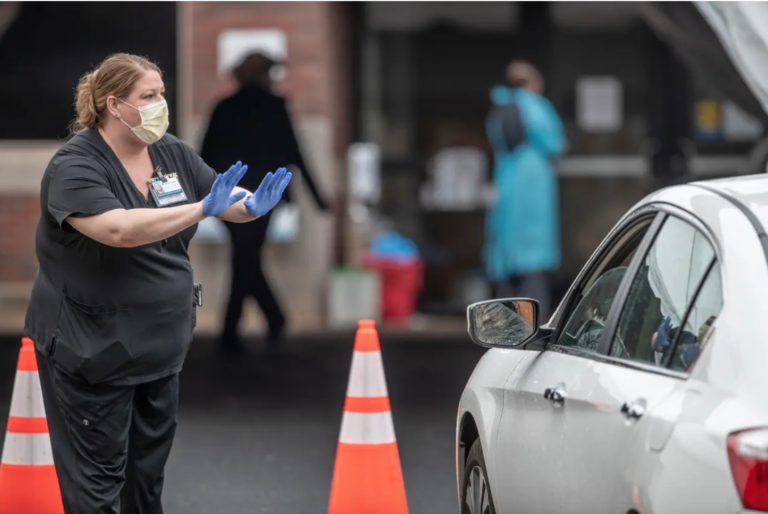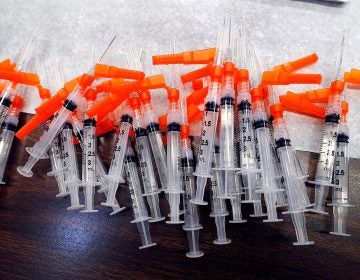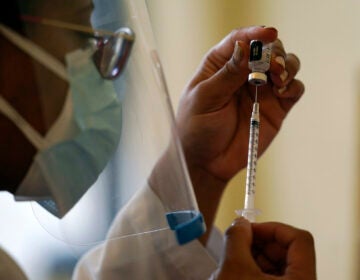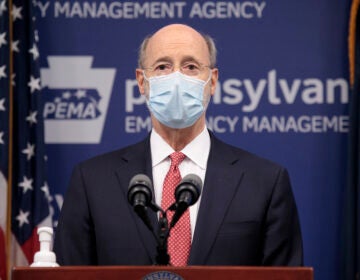Philly and suburban counties urge Wolf to redistribute COVID-19 burden
Philadelphia and its surrounding counties have been hard-hit by COVID-19. Now, they want to share resources with areas that didn’t get the brunt of the pandemic.

Philadelphia and its surrounding counties have been hard-hit by COVID-19. Now, they want to share resources with areas that didn’t get the brunt of the pandemic. (Michael Bryant/Spotlight PA)
Are you on the front lines of the coronavirus? Help us report on the pandemic.
Officials from Philadelphia and the four counties that surround it are asking Gov. Tom Wolf to reorganize the commonwealth’s supply of ventilators and empty intensive care beds to help them deal with mounting coronavirus cases.
On Monday afternoon, they sent a letter urging the governor to implement “load balancing” — a technique they say already is being used in New York and Michigan.
It would involve transferring patients from overburdened hospitals to ones with more space, and likewise transferring ventilators and other necessary equipment from flush facilities to struggling ones.
County commissioners from Bucks, Chester, Montgomery and Delaware counties signed the letter, along with Philadelphia Mayor Jim Kenney.
“It just seemed to make a lot of sense,” said Marian Moskowitz, chair of the Chester County Commissioners. “It really would take some of the pressure off the southeast in particular, but also all the hospitals…if everybody buys into this, then we have places we can take patients that we’re not overwhelming our hospitals.”
The commissioners said they based their request on a “widely used and accepted model,” estimating that ICU bed capacity may be outstripped by 11 percent in Pennsylvania’s hardest-hit areas, and that the need could exceed availability by two to one.
“These estimates are probably underestimated when accounting for patients coming into the region, in particular into Philadelphia, Berks and Lehigh, from the overburdened New York and New Jersey hospital systems in order to access care,” they added in the letter.
One of the most commonly-referenced models is from the Institute for Health Metrics and Evaluation at the University of Washington. It was revised Monday to reflect a smaller peak in cases in Pennsylvania and elsewhere — around 314 ICU beds needed on April 11.
Mike Dunn, a spokesman for Mayor Kenney, said the letter was drafted over the weekend using multiple models to project bed and equipment utilization.
“It is undeniable,” he added, “that the [southeast] portion of the Commonwealth will continue to bear the brunt of this crisis, and we must be prepared with the proper resources to withstand a worst-case scenario.”
Moskowitz noted it’s not exactly clear how the arrangement would work in practice — like where patients would be sent, or which hospitals would provide spare equipment.
“Look, we don’t know what next week’s going to bring. We don’t even know what this week is going to bring,” she said. “But looking at the numbers now, there are areas that are not seeing the increased growth like some of the suburban counties here are.”
County and city officials said they haven’t yet heard back from the Wolf administration.
Spokespeople from the governor’s office and Department of Health didn’t immediately return requests for comment.
WHYY is your source for fact-based, in-depth journalism and information. As a nonprofit organization, we rely on financial support from readers like you. Please give today.





![CoronavirusPandemic_1024x512[1]](https://whyy.org/wp-content/uploads/2020/03/CoronavirusPandemic_1024x5121-300x150.jpg)


